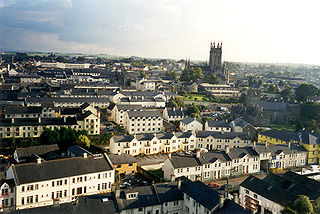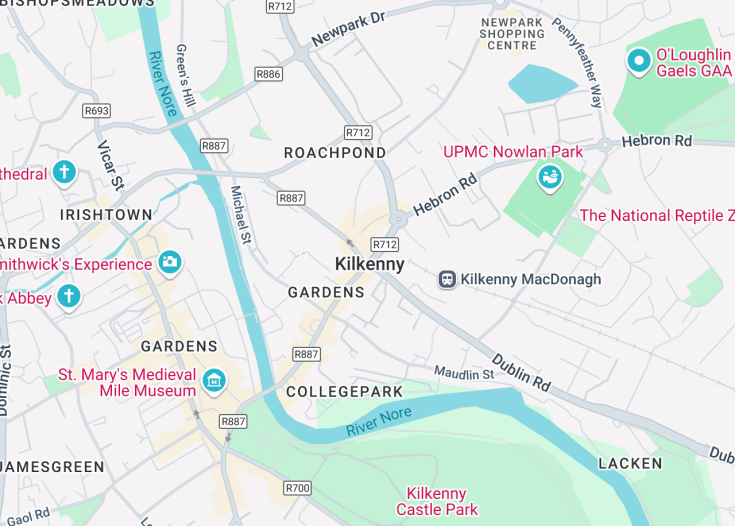Nestled in the heart of Ireland, Kilkenny is a captivating city renowned for its rich history and vibrant cultural scene. Known as the “Marble City” due to its distinctive black limestone, Kilkenny mesmerizes visitors with its well-preserved medieval architecture, including the imposing Kilkenny Castle.
The city’s dynamic arts and crafts community, bustling markets, and lively pubs offer a deep dive into Irish heritage and modern charm. Kilkenny’s annual arts festival further highlights its status as a hub of creativity and tradition. This city provides an enriching experience for those who cherish history intertwined with contemporary culture.
When visiting Kilkenny, consider touring the Medieval Mile, a stretch full of historic sites that tell the tale of the city’s past and vibrant culture.
To fully appreciate Kilkenny’s charm, plan your visit during the Kilkenny Arts Festival, which showcases a blend of national and international artistic talents.
Top things to do & see in Kilkenny
Select the following sights and activities to discover best tickets and tours available in Kilkenny.
Kilkenny: The Medieval Marvel of Ireland
| Country | Ireland |
| Time in Kilkenny | GMT+1 |
| Language spoken | English |
| Population | 26,512 (source: CSO 2016) |
| Currency | Euro (€, EUR) |
| Airports |
|
Located in the southeast of Ireland, Kilkenny is a city rich with medieval history and vibrant cultural heritage. Distinguished by its beautifully preserved old buildings and the majestic Kilkenny Castle, the city offers a journey through time with its winding alleyways, historic churches, and ancient monuments. Kilkenny is not just about historic preservation; it’s also a bustling hub for arts and crafts, playing host to numerous festivals throughout the year that showcase Ireland’s cultural prowess.
The city’s charm is further enhanced by the River Nore that flows through it, offering scenic views and a variety of waterside activities. Visitors can enjoy walking tours that reveal the stories behind the medieval facades, or participate in the thriving arts scene which includes galleries, theaters, and craft centers like the Kilkenny Design Centre. The local cuisine also reflects its rich heritage, with a focus on artisan ingredients and traditional methods.
Another significant aspect of Kilkenny is its lively pub scene where traditional Irish music brightly resonates, epitomizing Ireland’s warm community spirit. Apart from its aesthetic and cultural allure, Kilkenny plays a vital role in contributing to Ireland’s economy with tourism being a major component. Its well-preserved historical sites coupled with modern amenities make Kilkenny a unique blend that offers something for everyone, from history buffs and art lovers to those merely seeking a peaceful retreat in a picturesque setting.
Where is Kilkenny?
Kilkenny is situated in the midst of rolling hills in the southeast part of Ireland, well-connected to major Irish cities. It is part of the province of Leinster.
Distances:
| Route | Distance by car | Time by car |
|---|---|---|
| Dublin to Kilkenny | 80 miles | 1 hour 30 mins |
| Cork to Kilkenny | 105 miles | 2 hours |
| Galway to Kilkenny | 104 miles | 2 hours 15 mins |
What is Kilkenny famous for?
Kilkenny is celebrated for its rich medieval history, notably Kilkenny Castle, St. Canice’s Cathedral, and its numerous well-preserved historical buildings which form the backbone of its scenic cityscape and attract tourists globally.
History
Kilkenny, known as the Marble City, boasts a rich tapestry of historical narratives stretching from ancient settlements to a vibrant modern city. Each period in its history contributes uniquely to its cultural and architectural heritage.
Prehistoric and Early Medieval Period (Before 1085)
The region around Kilkenny was first settled by hunter-gatherer tribes during the Neolithic period, evidenced by the dolmens and standing stones scattered across the landscape. With the arrival of Celtic tribes and the introduction of Christianity in the 5th century, several monastic sites were established. These early Christian settlements laid down the spiritual and educational foundation of the area.
Norman Conquest and Medieval Kilkenny (1085-1600)
The real transformation of Kilkenny began with the Norman conquest in the late 12th century, following which substantial fortifications, including the iconic Kilkenny Castle, were constructed. The 13th to the 15th centuries marked a period of significant expansion and prosperity, with Kilkenny receiving its charter as a city in 1609. The medieval architecture from this era, including St. Canice’s Cathedral and the ancient stone houses, still defines much of the city’s character today.
Post-Medieval to Modern Era (1600-Present)
In the centuries following the medieval period, Kilkenny encountered both growth and challenges. The city played a minor role in the Irish Confederate Wars but remained mostly peaceful, allowing it to prosper in both commerce and education during the 18th and 19th centuries. In the 20th century, Kilkenny evolved into a small but vibrant hub of arts and culture, symbolized by the establishment of the Kilkenny Design Workshops in 1965 and the annual Kilkenny Arts Festival. This era of cultural renaissance continues to shape the city’s identity in the 21st century.
Visit Kilkenny
What to see and do in Kilkenny
Kilkenny, a city renowned for its historic architecture and vibrant culture, offers visitors a plethora of engaging activities and sights:
- Explore the medieval Kilkenny Castle and its expansive, beautifully landscaped gardens.
- Visit St. Canice’s Cathedral, featuring an ancient round tower that provides panoramic views of the city.
- Stroll through the cobbled streets of the city center, lined with artisan boutiques and traditional pubs.
- Enjoy contemporary Irish art at the Butler Gallery.
- Experience the thrills of the Kilkenny Arts Festival, showcasing local and international talent.
Festivals and Events in Kilkenny
Kilkenny hosts several annual events that celebrate its rich cultural heritage. Notable among these is the Kilkenny Arts Festival, held every August, featuring music, literature, art, and theatre.
Additionally, the Cat Laughs Comedy Festival, which takes place in early June, attracts comedians and audiences from around the globe.
Best time to visit Kilkenny
The best times to visit Kilkenny are during the late spring to early autumn months, from May to September, when the weather is mildest and the city’s festivals bring vibrant cultural life to the streets.
Is Kilkenny worth visiting?
Kilkenny is undoubtedly worth visiting, with its rich history mirrored in well-preserved medieval architecture, lively cultural scene, and a warm, welcoming atmosphere.
Whether you’re a history buff, art lover, or simply looking to explore traditional Irish life, Kilkenny offers a diverse range of attractions that can cater to all tastes.









